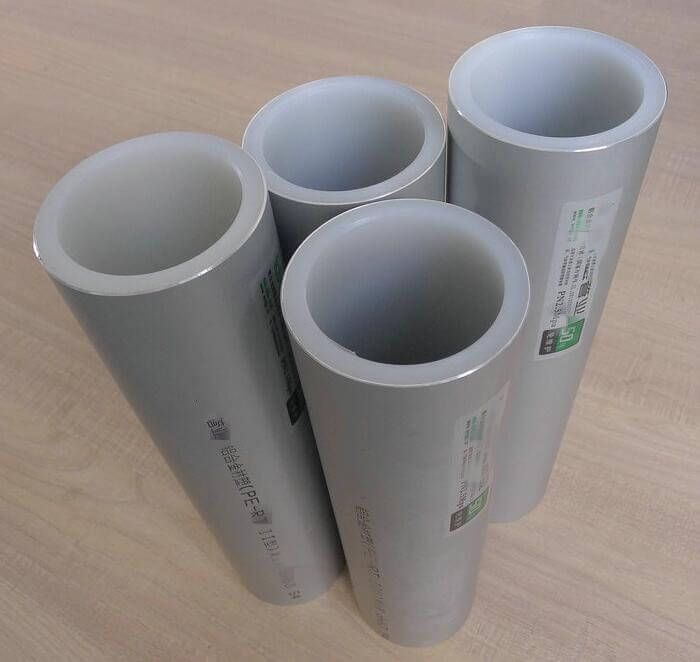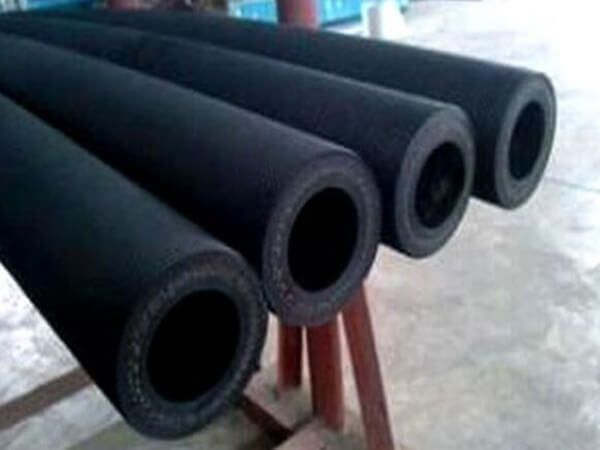Pipes can be divided into metal pipes and non-metallic pipes accord the materials. Metal pipes include ordinary steel pipe, galvanized steel pipe, copper tube, stainless steel pipe, cast iron pipe, etc., Non metallic pipes include various common plastic pipes, composite pipes, concrete pipes, rubber pipes, glass steel pipes, etc., Last article we introduced 8 kinds of plastic pipes in non-metallic pipes, this article we will introduce another non-metallic pipes and metal pipes.
Non-metallic Pipes
Composite pipe
Concept: Based on metal pipe, it is formed by welding polyethylene, cross-linked polyethylene and other non-metal materials inside and outside, with the characteristics of metal pipe and non-metal pipe.
Advantages: Light weight, smooth inner wall, low resistance, good corrosion resistance.
Disadvantages: It is easy to be damaged under the impact of external force, and the repair after the damage is an inevitable waste.
Purpose: Water supply and drainage pipe.
Classification: Aluminum plastic composite pipe, steel plastic composite pipe, copper plastic composite pipe, plastic coated composite pipe, steel frame PE pipe, etc.

1. Aluminum plastic composite pipe
Purpose: Used for domestic cold and hot water pipes. The composite pipe with cross-linked polyethylene inside and outside plastic layer can be used for hot water pipe, and the working temperature can reach 90 ℃.
Structure: Its basic composition should be five layers, that is, from the inside to the outside, they are plastic, hot melt adhesive, aluminum alloy, hot melt adhesive and plastic.
Classification: According to different polyethylene materials, it can be divided into two kinds: cross-linked polyethylene aluminum plastic composite pipe for hot water and high density polyethylene aluminum plastic composite pipe for cold water.
Advantages: Flexible pipe, heat preservation, corrosion resistance, impermeability, good air tightness, smooth inner wall, light weight, easy installation.
Disadvantages: Expensive price, limited strength, easy to damage, more fixed support, limited appearance, uneven wall thickness.
Connection: Aluminum alloy self-locking tight sealing pipe fittings. When the plastic sealing sleeve is used, the water temperature shall not exceed 60 ℃; When the aluminum sealing sleeve is used, the water temperature shall not exceed 100 ℃.
2. Steel plastic composite pipe
Application: Not only can be used for water supply, but also can transport corrosive liquid; The suitable temperature of S / PP is - 25 ~ 100 ℃; The suitable temperature of S / PE is - 25 ~ 70 ℃; S / PVC applicable temperature: - 25 ~ 65 ℃.
Advantages: A high performance anticorrosive pipeline, which has strong corrosion and abrasion resistance and good strength and anti-aging properties.
Disadvantages: The pipe wall is thick, the bearing pressure is limited, and there are some special requirements for processing and installation.
Connection: Special pipe thread connection, flange connection.
3. Aluminum alloy lined plastic composite pipe
Purpose: It is specially used for domestic cold and hot water pipes.
Structure: The outer tube is made of aluminum alloy, and the inner tube is made of thermoplastic. The outer layer of aluminum alloy not only plays the role of oxygen resistance, but also plays the role of structural bearing.
Advantages: Beautiful appearance, heat preservation, corrosion resistance, impermeability, good air tightness, smooth inner wall, light weight, easy installation.
Disadvantages: The outer layer is afraid of acid and alkali corrosion, and the pipe fittings are external joints, which is not conducive to concealed installation.
Connection: special ferrule and flange connection.
Glass Pipe
Concept: Glass fiber reinforced plastic pipe is made of a variety of resins with different properties as inner liner impervious layer and composite with glass fiber reinforced layer.
Advantages: Heat preservation, corrosion resistance, smooth inner wall.
Disadvantages: High interface requirements, easy to leak, not easy to construct, expensive.
Application: Suitable for large and medium outdoor water supply pipeline with strong geological corrosivity.
Connection: Ordinary sand FRP pipe adopts socket connection.
Rubber Tube/Pipe
Concept: Rubber products. Generally, natural rubber, styrene butadiene rubber or cis-1,4-polybutadiene rubber are used as inner and outer rubber layer materials of rubber hose; Chloroprene rubber and nitrile rubber are used for oil resistant hose; Ethylene propylene rubber, fluororubber or silicone rubber are used for acid and alkali resistance and high temperature resistance.
Advantages: Corrosion resistance, vibration resistance, anti noise, convenient interface.
Disadvantages: Large flow resistance, low pressure.
Uses: Water pipe, hot water pipe, steam pipe, marine pipe, food and beverage pipe, air pipe, welding pipe, gas pipe, ventilation pipe, material pipe, oil pipe, chemical pipe, high pressure pipe, etc.
Connection: Flange connection, tie connection.

Concrete Pipe
Concept: It is a kind of preset pipe made of cement and steel bar by using the principle of pole centrifugal force.
Application: Large and medium outdoor water supply pipeline, water conservancy project.
Advantages: Low price, good corrosion resistance after treatment.
Disadvantages: Heavy weight, difficult construction, parts easy to damage.
Connection: The concrete pipe adopts rubber ring and tape interface, and the reinforced concrete pipe adopts rubber ring interface.
Metal Pipe
1. Ordinary steel pipe
Uses: Water supply pipes for production and fire fighting, drainage branch pipes for sanitary appliances, non corrosive production drainage branch pipes for production equipment, rainwater pipes for industrial plants.
Advantages: High strength, convenient interface, large internal pressure, smooth internal surface and good hydraulic condition.
Disadvantages: Easy to corrode, high cost.
Connection: Welding, flange connection.
2. Galvanized Steel Pipe (Hot Dip)
Application: Fire fighting system and production water supply pipeline with diameter less than or equal to 150 mm.
Advantages: High strength, convenient interface, large internal pressure, smooth internal surface and good hydraulic condition.
Disadvantages: Easy to corrode, high cost.
Connection: Threaded connection, flange connection.
3. Copper Tube (Red Copper, Brass)
Purpose: Hot water pipe.
Advantages: Good corrosion resistance to fresh water, high mechanical strength, strong flexibility resistance, easy processing, smooth inner surface, not easy to scale, beautiful.
Disadvantages: Thin pipe wall, easy to damage.
Connection: Threaded connection, flange connection, welding, special pipe fittings.
4. Stainless Steel Tube
Purpose: To transport pure water and corrosive production sewage.
Advantages: Corrosion resistance, impermeability, good air tightness, smooth inner wall, light weight, easy installation, high pressure resistance and vibration resistance.
Disadvantages: Not easy to construct and expensive.
Connection: Compression type, compression type, push type (flexible type), taper thread type, quick flange type, flange type, screw type, socket type.
5. Cast Iron Pipe
Application: Mainly used in water supply, drainage and gas pipeline engineering.
Classification: According to the different manufacturing methods, it can be divided into: Sand Mold Centrifugal socket straight pipe, continuous cast iron straight pipe and sand mold iron pipe. According to the different materials used, it can be divided into grey cast iron pipe, ductile cast iron pipe and high silicon iron pipe.
Advantages: High strength, good toughness, thin wall, light weight, impact resistance, bending function, easy installation.
Disadvantages: Aging, large thermal expansion and cold contraction, not suitable for long-term exposure to sunlight, poor compression function, improper construction, easy to cause deformation.
Connection: Flexible interface, flange interface, self anchored interface and rigid interface.